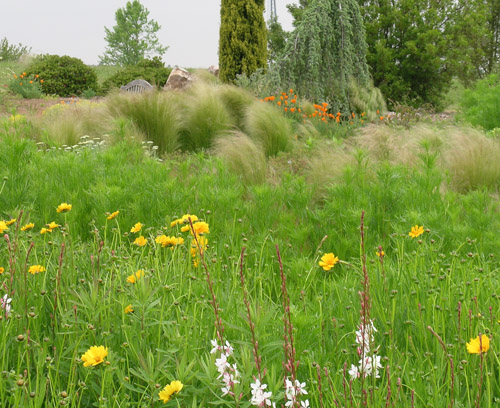Whether you plant wildflowers in huge swaths along roadsides or in tiny pocket gardens in the backyard, the vibrant colors and rich mixtures these hardy plants bring are sure to please any flower-lover’s eye and attract beneficial pollinating insects.
But don’t let the word wild make you think wildflowers require no maintenance. As with any kind of gardening, planting and caring for wildflowers requires work and planning, but following these basic rules from University of Georgia Extension will assure your success.
Select seeds, chose and prepare site
Choose a site. It may be tempting to plant wildflowers where nothing else grows, but while they're hardy, they're not magical. Most need full sun and moderately fertile soils that drain well, but not too quickly.
Choose seeds. Your wildflowers will only be as good as the seeds you sow. Invest the time and energy to plant them right. Don't ruin the project before it begins by using questionable seeds. Most mixtures include annuals and perennials. In general, mixtures for warm climates may include more annuals, because they tend to reseed year after year.
Prepare the site. I highly recommend removing existing vegetation before planting wildflower seeds. Till the soil, if you can, to create a loose seedbed. If you can't till, at least scratch the soil surface.
Weed, plant and water
Eliminate weed seeds in the upper layer of the soil. Allow weeds to germinate and begin to grow, then remove the weeds by chemical or mechanical means. Don't till again, or you may turn up new weed seeds and have to repeat the process.
Plant the seeds. Good seed to soil contact is essential for a high germination rate. For even distribution, mix seeds with sand, vermiculite or cornmeal. Scatter seeds and rake them in lightly. Be careful not to cover them too deeply. Fall plantings offer the advantage of early germination and growth. Spring or early summer planting is fine in most areas, but you may have to provide water for the first several weeks.
Water the site. Many wildflowers are drought tolerant, but all plants, wildflowers included, need enough moisture to germinate and thrive. Keep the site evenly moist during the first four to six weeks. Then gradually reduce watering.
Maintain and weed
Maintain the area. Mow wildflowers high three times - usually in late spring, midsummer and late fall. Rake up the cut material, or leave it in place to serve as a protective mulch. After cleanup mowing in late fall, overseed annuals and bare spots as needed with half the normal seeding rate.
With timely weeding, watering and mowing, wildflowers will bring beauty and fragrance as the seasons unfold from full spring flowers to autumn's last lingering aster.
For more on growing wildflowers in Georgia, see UGA Extension publication B 987-3 “Native Plant for Georgia Part III: Wildflowers” at www.extension.uga.edu/publications.








